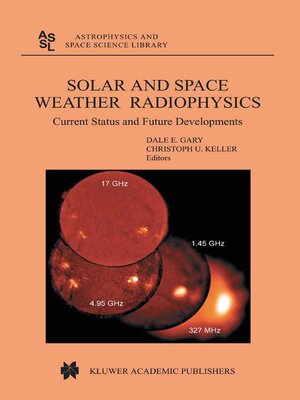Solar and Space Weather Radiophysics
ebook ∣ Current Status and Future Developments · Astrophysics and Space Science Library
By D.E. Gary

Sign up to save your library
With an OverDrive account, you can save your favorite libraries for at-a-glance information about availability. Find out more about OverDrive accounts.
Find this title in Libby, the library reading app by OverDrive.



Search for a digital library with this title
Title found at these libraries:
| Library Name | Distance |
|---|---|
| Loading... |
This volume is the outgrowth of several international meetings to discuss a vision for the future of solar radio physics: the development of a new radio instrument. From these discussions, the concept for the Frequency Agile Solar Radiotelescope (FASR) was born. Most of the chapters of this book are based oninvitedtalksattheFASRScienceWorkshop,heldinGreenbank,WVinMay 2002, and a special session on Solar and Space Weather Radiophysics held at the 200th American Astronomical Society meeting held in Albuquerque, NM in June 2002. Although many of the chapters deal with topics of interest in planning for FASR, other topics in Solar and Space Weather Radiophysics, such as solar radar and interplanetary scintillation, are covered to round out the discipline. The authors have been asked to write with a tutorial approach, to make the book useful to graduate students and scientists new to radio physics. This book is more than a compilation of FASR science topics. The FASR instrument concept is so revolutionary—by extending capability by an order of magnitude in several dimensions at once (frequency coverage, spatial reso- tion,dynamicrange,timeresolution,polarizationprecision)—thatitchallenges scientiststothinkinnewways. Theauthorsofthefollowingchaptershavebeen taskednotonlywithreviewingthecurrentstateofthe?eld,butalsowithlooking to the future and imagining what is possible. Radio emission is extremely complex because it is generated so readily, and every imaginable plasma parameter affects it. This is both its great strength and its weakness.







